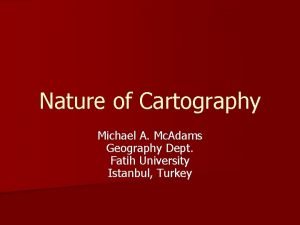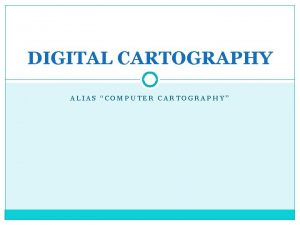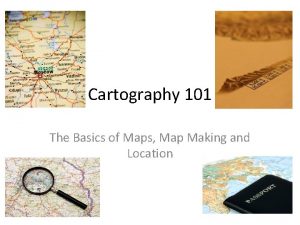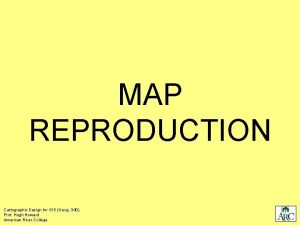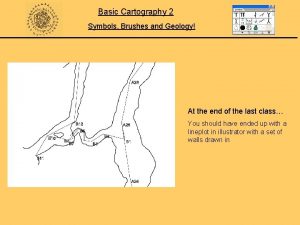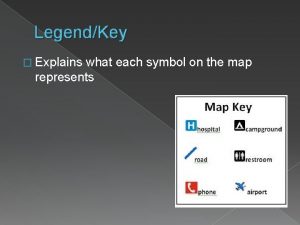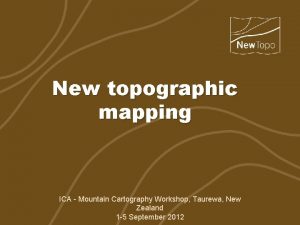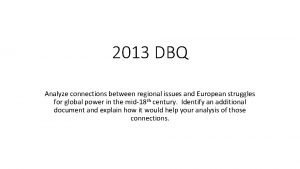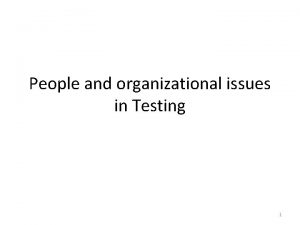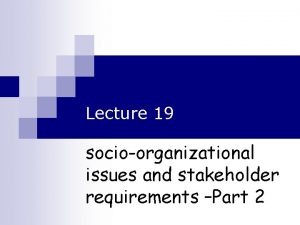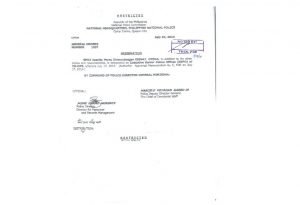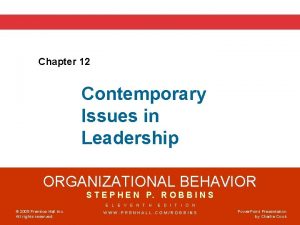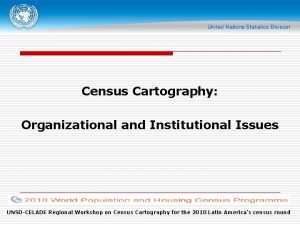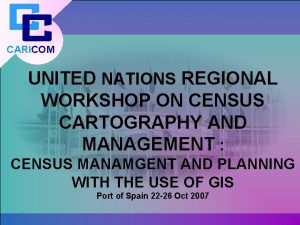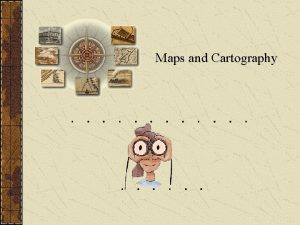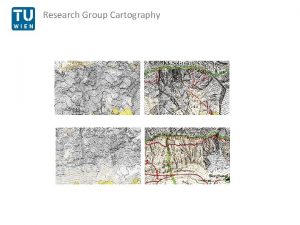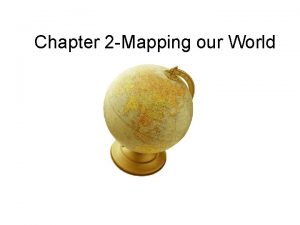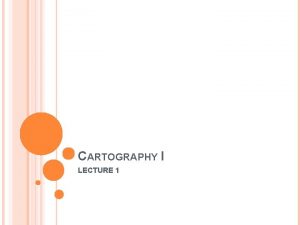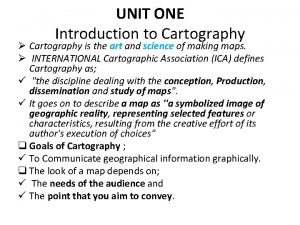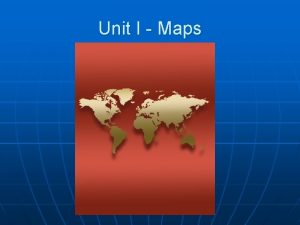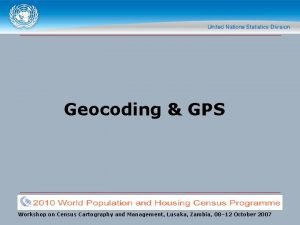Census Cartography Organizational and Institutional Issues Regional Workshop
















- Slides: 16

Census Cartography: Organizational and Institutional Issues Regional Workshop on the 2010 World Programme on Population and Housing Censuses: International standards, contemporary technologies for census mapping and data processing Minsk, Belarus, 8 -12 December 2008

Overview q Building a geospatial Infrastructure: n Census geography programme: continous process n Using geospatial technologies at all census stages q Institutional and organizational issues: n n n In-house Cartography/GIS unit Technical and human capacities Institutional collaboration q NSDI q Conclusion Regional Workshop on the 2010 World Programme on Population and Housing Censuses: International standards, contemporary technologies for census mapping and data processing Minsk, Belarus, 8 -12 December 2008

Census Geography Programme: a continuous process q The recommendations derived from the UN EGM on GIS and census mapping emphasized the need for countries to consider the census geography programme as a continuous process, rather than the sequential mapping and dissemination operations. q It was also emphasized that the use of and application of contemporary geospatial technologies and geographical databases is beneficial at all stages of population and housing census process. Geospatial improve the efficiency in the preparatory, enumeration, processing and dissemination phases of the census Regional Workshop on the 2010 World Programme on Population and Housing Censuses: International standards, contemporary technologies for census mapping and data processing Minsk, Belarus, 8 -12 December 2008

Geospatial Technologies at all stages (Pre-enumeration) Digital Mapping Census Database Geodatabase/GIS Aerial Photo. Satellite Imagery GPS EAs Units (Enumeration) Digital Mapping Mobile GIS (Post-enumeration) Thematic Maps Databases Maintenance GIS GPS/PDA Internet Mapping Administrative and Reporting Units Regional Workshop on the 2010 World Programme on Population and Housing Censuses: International standards, contemporary technologies for census mapping and data processing Minsk, Belarus, 8 -12 December 2008

Census Geography Programme q National Statistical Organizations should: n Develop GIS as a long term project: o To prepare the census enough in advance o Too expensive for the census only o To be used beyond the census as infrastructure for other statistical purposes (other sources, sample frame. . . ) n Ensure the availability of adequate resources to that end; n Actively participate, in partnership with other national authorities, in the development of a national geographical information capacity, including the National Spatial Data Infrastructure (SDI): sharing data, standards, etc. Regional Workshop on the 2010 World Programme on Population and Housing Censuses: International standards, contemporary technologies for census mapping and data processing Minsk, Belarus, 8 -12 December 2008

Institutional/Organizational Issues q It is becoming clear that the major barriers to integrate geospatial technologies with census mapping are not necessarily technical but rather institutional and organizational n A specialized in-house Cartography/GIS unit n Building technical and human capacities n Participating in the building of the National Spatial Data Infrastructure (NSDI): NSO can be custodian of basic components Regional Workshop on the 2010 World Programme on Population and Housing Censuses: International standards, contemporary technologies for census mapping and data processing Minsk, Belarus, 8 -12 December 2008

Spatial Data Infrastructure (SDI) q Geographic Information: o Infrastructure concept q Important as physical infrastructure assets such as roads, communications networks, and other public utilities q Promoted through UN Regional Cartographic Conferences (Americas and Asia &Pacific), UN Geographic Information Working Group (UNGIWG), and the Global SDI Association… Regional Workshop on the 2010 World Programme on Population and Housing Censuses: International standards, contemporary technologies for census mapping and data processing Minsk, Belarus, 8 -12 December 2008

National Spatial Data Infrastructure (NSDI) q Definition - the technology, policies, standards, human resources, and related activities necessary to acquire, process, distribute, use, maintain, and preserve spatial data q Part of a nation’s e-Gov strategy q www. GSDI. org Regional Workshop on the 2010 World Programme on Population and Housing Censuses: International standards, contemporary technologies for census mapping and data processing Minsk, Belarus, 8 -12 December 2008

Framework Data (common)/ Reference Data q q q q Geoditic network Administrative Boundaries Hydrography Elevation Roads and Railroads Cadastre (Land System) Geographical Names Regional Workshop on the 2010 World Programme on Population and Housing Censuses: International standards, contemporary technologies for census mapping and data processing Minsk, Belarus, 8 -12 December 2008

List of 13 Core Layers (UN) (to be reviewed, Santiago Nov. 2006) 1. 2. 3. 4. 5. 6. 7. 8. 9. 10. 11. 12. 13. Transportation network/Roads/rails/Navigation routes Population centres / gridded Population density Hydrography / Hydrology / drainage network/ River and lake basins Hydrogeology Coastlines Land-cover/Land-use Hypsographic ( elevation contours) Bathymetry Landmine areas Protected area / Restricted areas Geology, geomorphology Airports/Helipad Health facilities Regional Workshop on the 2010 World Programme on Population and Housing Censuses: International standards, contemporary technologies for census mapping and data processing Minsk, Belarus, 8 -12 December 2008

Main NSDI Components Regional Workshop on the 2010 World Programme on Population and Housing Censuses: International standards, contemporary technologies for census mapping and data processing Minsk, Belarus, 8 -12 December 2008

Some SDI examples q Regional SDI: INSPIRE n n INSPIRE: Infrastructure for spatial information in Europe Adopted on 21 November 2006 q UNSDI: n n UN Geographic Information Working Group: Umbrella for UN bodies, in charge of the UN SDI Second Administrative-Level Boundaries (SALB) Project q Global Mapping Initiative: n n Core layers at 1: 1 million More than 130 countries are involved Regional Workshop on the 2010 World Programme on Population and Housing Censuses: International standards, contemporary technologies for census mapping and data processing Minsk, Belarus, 8 -12 December 2008

Geographic Information Standards q ISO/TC 211 n Countries q Open. GIS Consortium n Industry Regional Workshop on the 2010 World Programme on Population and Housing Censuses: International standards, contemporary technologies for census mapping and data processing Minsk, Belarus, 8 -12 December 2008

Some good news! q A new ICA Working Group on Census Cartography n n Created by ICA, Moscow, 2007 Chair: Tim Trainor, US Census Bureau http: //cartography. tuwien. ac. at/ica/workinggroups/census/ Terms-of-Reference: o Share and exchange information on mapping methodologies that support censuses and statistical surveys. o Encourage the use of new technologies and approaches supporting census mapping. o Serve as a forum for census cartographers and organizations that promote census mapping activities. Regional Workshop on the 2010 World Programme on Population and Housing Censuses: International standards, contemporary technologies for census mapping and data processing Minsk, Belarus, 8 -12 December 2008

Conclusion q Encourage NSO to build a geospatial infrastructure in support of census activities q Cope with institutional and organizational aspects q Participate actively in the building of NSDI Regional Workshop on the 2010 World Programme on Population and Housing Censuses: International standards, contemporary technologies for census mapping and data processing Minsk, Belarus, 8 -12 December 2008

Thank You! Regional Workshop on the 2010 World Programme on Population and Housing Censuses: International standards, contemporary technologies for census mapping and data processing Minsk, Belarus, 8 -12 December 2008
 New york regional census center
New york regional census center Nature of cartography
Nature of cartography Digital cartography definition
Digital cartography definition Basics of cartography
Basics of cartography Map of europe 1492
Map of europe 1492 Cartography
Cartography Map reproduction in cartography
Map reproduction in cartography Cartography brushes
Cartography brushes What kind of map
What kind of map Applied cartography
Applied cartography Mountain cartography
Mountain cartography Analyze connections between regional issues
Analyze connections between regional issues People and organizational issues in testing
People and organizational issues in testing Socio-organizational issues and stakeholder requirements
Socio-organizational issues and stakeholder requirements Draw the present pnp organizational structure
Draw the present pnp organizational structure Organizational development workshop
Organizational development workshop Contemporary issues in organizational behavior
Contemporary issues in organizational behavior

